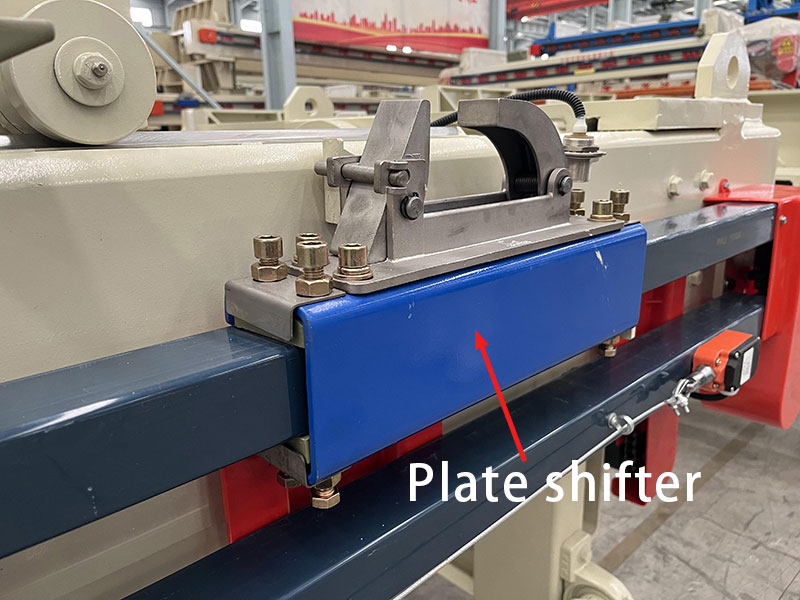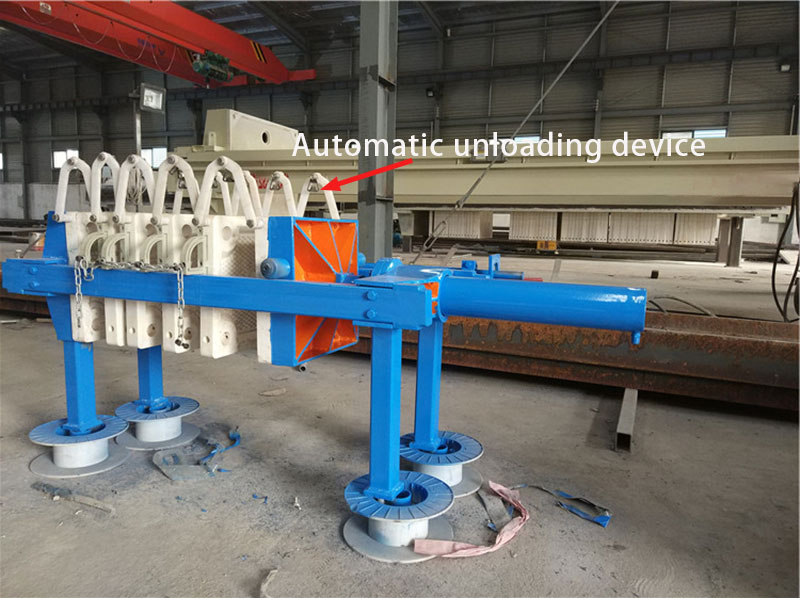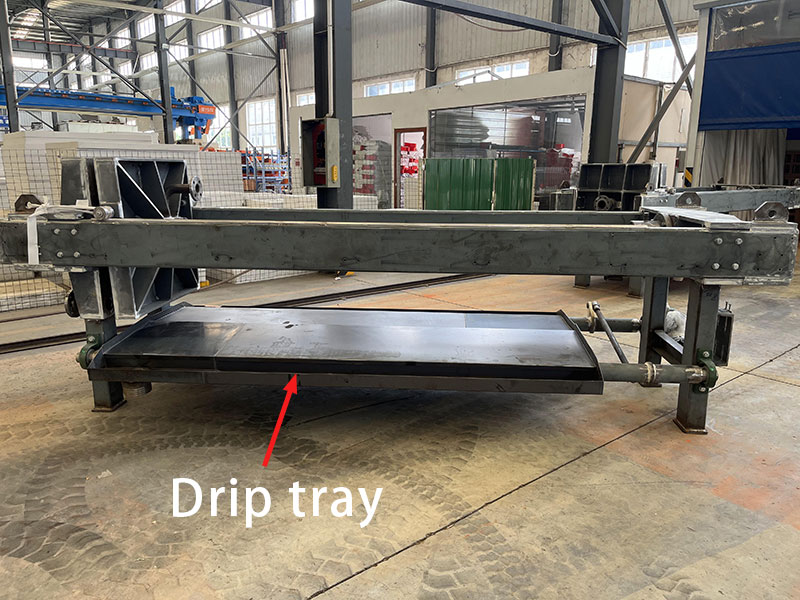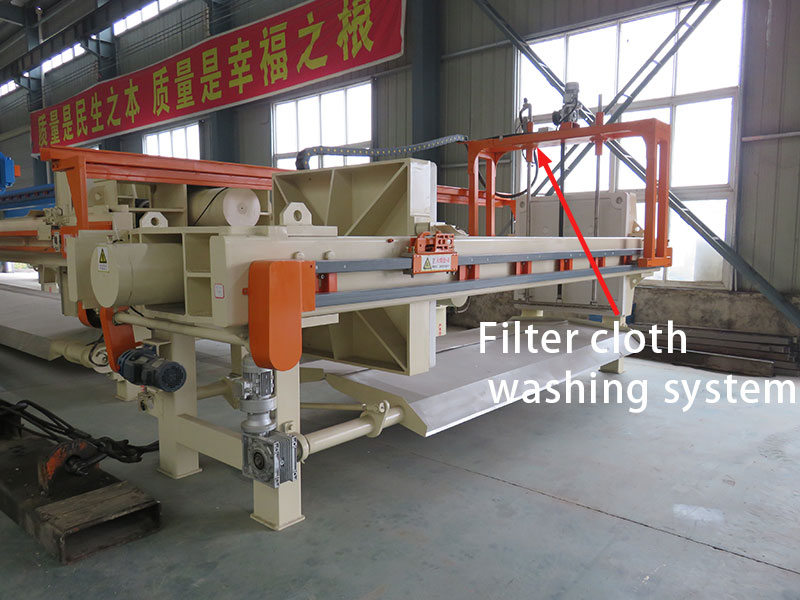4 Common Automation Functions of Filter Press
The automation features of filter presses play an important role in increasing efficiency, reducing manual operations, and increasing safety. With the development of technology, filter presses are equipped with a variety of automation functions. The following are 4 common automation functions of filter press:
Automatic Plate Pulling System
The automatic plate-pulling system is an important automation function in the filter press, which greatly improves the efficiency and safety of the filtration process. This system is mainly used to automatically separate the filter plates after the filtration process is completed to facilitate the removal of the filter cake. The plate shifter is a key component of the automatic plate-pulling system of the filter press. It assumes the important task of moving the filter plate during the automatic cake unloading process. Plate shifters are often tightly integrated with the filter press’s automatic control system for optimal operating efficiency and accuracy.

Plate shifters are typically constructed of a sturdy metal frame equipped with wheels and a drive system (usually electric or hydraulic) that allow them to move smoothly on the track. It can be driven by an electric motor or a hydraulic system. Depending on the design of the filter press, the plate shifter can move each filter plate individually or move multiple filter plates simultaneously. The highly automated control system allows the plate trolley to accurately position specific filter plates and complete the extraction and placement of filter plates without manual intervention.
Automatic Discharge Device
The automatic unloading device is one of the important components in the filter press used to improve efficiency. This device can automatically remove the filter cake after the filtration process is completed, significantly improving the automation level of the production process. The automatic unloading device is designed to reduce manual operations and speed up production.
Usually, after filtration is completed, the sensor or control system detects that the filter cake has formed and starts the unloading device. The device may work through a variety of mechanisms, such as push rods, rotating scrapers, or vibrating platforms, to move or vibrate the filter cake away from the filter cloth and remove it. The unloaded filter cake is transferred to a designated collection area, such as a conveyor belt or container, for further processing or packaging. After the filter cake is completely unloaded, the unit is cleaned of residue and reset for next use.

The automatic discharge device can be part of the filter press system or installed as a separate add-on module, depending on the design of the filter press and the required production capacity. When selecting and configuring an automatic unloader, the physical characteristics of the material, discharge speed requirements, and the degree of integration with other production processes need to be considered. Overall, the automatic unloading device is a key technology to improve the efficiency and safety of industrial filtration, especially in the chemical, food processing, mineral processing, and environmental protection industries, and its role is particularly significant.
Drip Tray
The drip tray of the filter press is mainly composed of the drive cylinder frame connection, panel leg bearings, and supporting bearing seats. It is a two-coordinated flap installed under the filter press often used in supporting products such as chamber diaphragm filter press, plate and frame filter press. During the production filtration process, the automatic flipping system is in a closed state to collect the filtrate or flushing liquid and introduce it into the collecting tanks on both sides. When unloading the filter cake, the system is open to ensure the complete fall of the filter cake. The automatic turning plate system can not only collect the liquid dripping from the filter plate but also prevent the dehydrated material from getting wet.

During the filtration process, when the filtrate passes through the filter cloth and filter plate, the solids in the filtrate are left on the filter cloth to form a filter cake, while the clear liquid passes through the filter plate. Inevitably, part of the filtrate will leak from the gaps between the filter plates, and this part of the liquid will be collected by the drip tray. Drip trays usually have an outlet through which the collected liquid can be drained to a predetermined container or to the next processing step. The automatic plate turning device can quickly flip the filter plate and dump the filter cake directly to the discharge area below, greatly shortening the discharge time. By reducing the need for manual intervention with filter plates and filter cakes, operational complexity, and labor intensity are reduced.
Automatic Filter Cloth Washing System
The automatic filter cloth washing system is a very critical component in the filter press, which is used to automatically clean the filter cloth to maintain its filtration efficiency and extend its service life. In continuous or large batch filtration operations, the filter cloth is prone to clogging, which reduces filtration efficiency. Therefore, the application of automatic cleaning devices is crucial to improve overall operational efficiency and reduce downtime.
The washing system mainly consists of a telescopic oil cylinder, guide pipe, support frame, and water spray pipe. The device is installed between the two beams directly above the filter plate and moves along the track on the inner bottom plate of the beam with the help of a transmission chain. The piston of the two-stage telescopic oil cylinder drives the water spray pipe to rise and fall and, at the same time, flushes the filter cloth from both sides.

The cleaning process can be set to be executed automatically at a scheduled time or triggered based on parameters such as pressure sensors and flow monitoring. During cleaning, the nozzle sprays the cleaning medium, usually clean water, and sometimes an appropriate amount of detergent may be added. The movement of the nozzle and the water pressure are precisely controlled to ensure coverage of the entire filter cloth surface. The cleaned wastewater will be collected and discharged to prevent contamination and re-clogging of the filter cloth. After cleaning, the system will automatically reset and prepare for the next filtration or cleaning cycle.
Conclusion
In short, the integration of these automated functions makes the filter press more reliable and efficient in various industrial productions while also reducing labor intensity and operating difficulty. These advantages make filter presses widely used in wastewater treatment, chemical products, food and pharmaceutical industries, and other fields.

